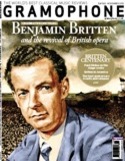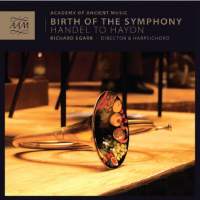Texte paru dans: / Appeared in:
*

GRAMOPHONE (11 /2013)
Pour s'abonner /
Subscription information
Academy of Ancient Music
AAM001

Code-barres / Barcode : 5060340150013
Reviewer: Richard Wigmore
AAM on ‘the
symphony’ from entertainment to exaltation
From its origins in the operatic overture, the symphony evolved from an
entertainment to be chattered or munched through to a vehicle for a
composer’s most exalted thoughts. By 1750 symphonies were being produced on
an industrial scale, not least in Mannheim, whose orchestra was renowned
throughout Europe for its power and pizzazz.
After their Handelian entrée, the Academy of Ancient Music launch their conspectus of the early symphony with two composers associated with Mannheim, Franz Xaver Richter and Johann Stamitz. Richter’s symphony of c1740 mingles pounding energy and a faintly chaotic quirkiness. Neither here nor in the D major Symphony by Johann Stamitz is there anything that could be called a melody, though the first movement of the Stamitz entertains with its frenetic violinwriting. For all its slightness, Mozart’s prepubescent symphony already shows a feeling for balance and a suavity of line influenced by his contact with JC Bach in London. But by far the most substantial symphony here is Haydn’s La Passione of 1768, with its mournful opening Adagio and darkly explosive fast movements.
Once I’d adjusted to the rather
boomy church acoustic, the AAM’s performances gave virtually unalloyed pleasure.
Animated by Richard Egarr’s harpsichord, their style is bold and fiery, though
there is ample tenderness in the slower sections of the Saul sinfonia. The
10-strong string ensemble play up Richter’s extreme contrasts and articulate the
crackling repeated notes in the Stamitz symphony with thrilling precision. With
added oboes and horns, they relish the youthful swagger of the Mozart and
realise all the baleful intensity of La Passione. With a larger AAM (and the
same leader, Pavlo Beznosiuk), Christopher Hogwood recorded this symphony 20
years ago (12/94). Egarr’s vision is altogether rawer: starker in the opening
via crucis, more ferocious in the fast movements – not flawless, perhaps, but
certainly one of the most powerful and disturbing performances on disc.
Cliquez l'un ou l'autre
bouton pour découvrir bien d'autres critiques de CD
Click either button for many other reviews


